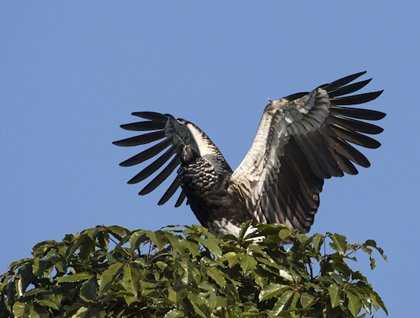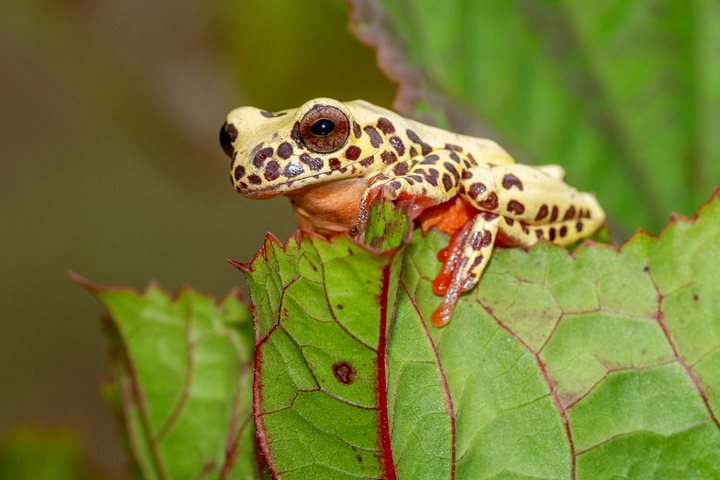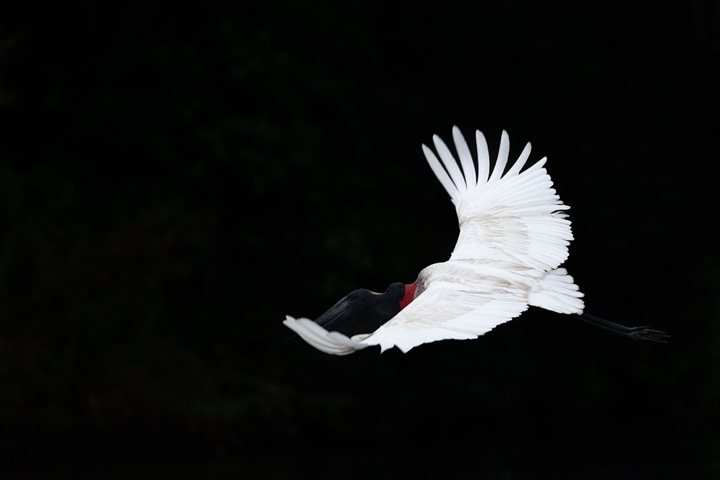The Pacaya is one of the main rivers of the Pacaya-Samiria National Reserve in Peru; it flows a long distance from inside the reserve into the Ucayali River, and at some point it connects to another important tributary, the Samiria River, which flows to the Marañon River. We spent the whole day today exploring the Pacaya, starting early in the morning as usual; we stopped briefly at a park ranger’s station to register ourselves and then began our daily search for wildlife. This is the furthest that we will be travelling into the reserve, and it is easy to see that the Pacaya is a wilder place, and wildlife sightings are frequent and interesting. Besides the common species like the black-collared and great black hawks, anhinga and cocoi heron, we found other animals that are not very commonly seen, like the Taricaya river turtle, the monk saki monkey, the horned screamer and several macaw species. We even had the opportunity to watch some creatures that are no longer found in areas closer to human settlements, like the red howler monkey and the Amazonian manatee!
After spending the morning on the search for wildlife, we tied all of the skiffs together under the shade of a big tree and transformed them into a very unique “jungle cafe”; our local guides put their binoculars aside for a moment and became waiters. What a treat to enjoy a delicious breakfast in the middle of the jungle!
In the afternoon, we boarded the skiffs again and headed back into the Pacaya River with the intention of exploring it even further. Numerous grey dolphins and pink river dolphins at the river mouth greeted us; both species favor those places where black water tributaries enter the larger whitewater rivers, and they were particularly abundant today. We found several more interesting species as well, including dusky parakeets, squirrel monkeys and green iguanas. Some adventurous souls went swimming in the black waters of Yanayacu Lake, and enjoyed a refreshing time, floating around with a beer or soft drink in their hands.
Once the sun approached the horizon and casted a beautiful light and the temperature dropped, many creatures became more visible, and we had the chance to watch the large red howler monkeys again. Several groups of them enjoyed the last rays of the sun on the highest part of the tallest trees, and their mere presence made us realize how fortunate we are to have the chance to experience this wild portion of the largest tropical rainforest on earth, Amazonia.







